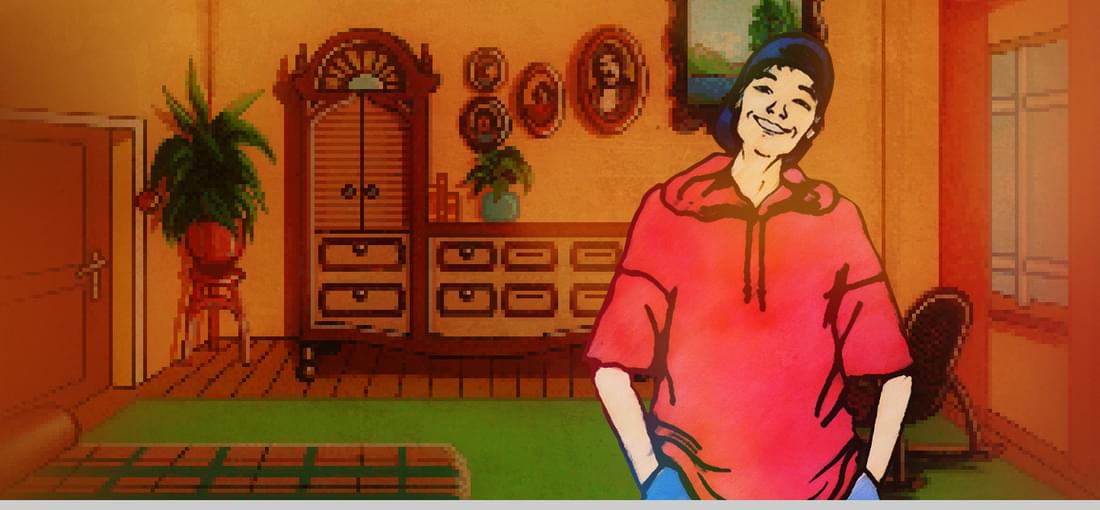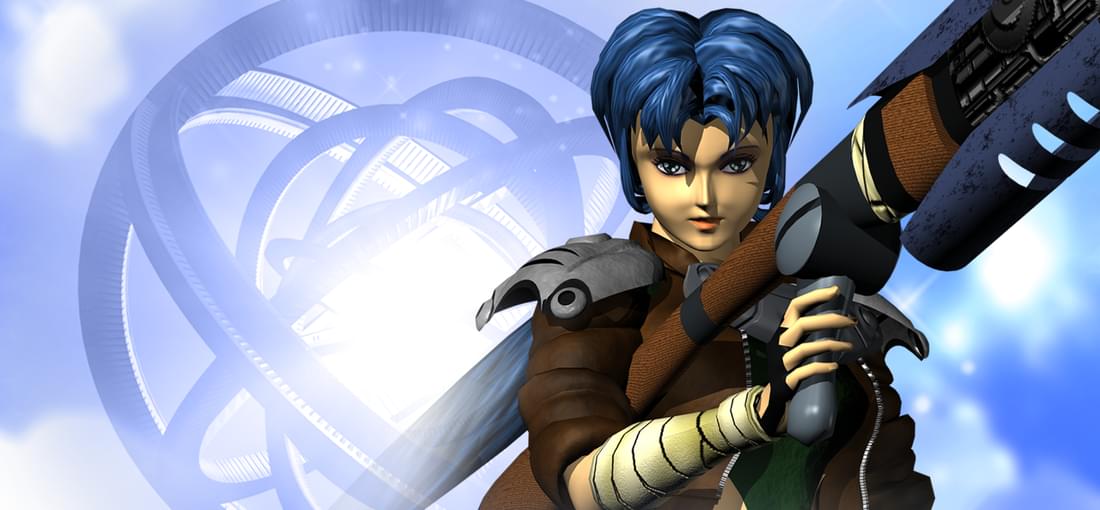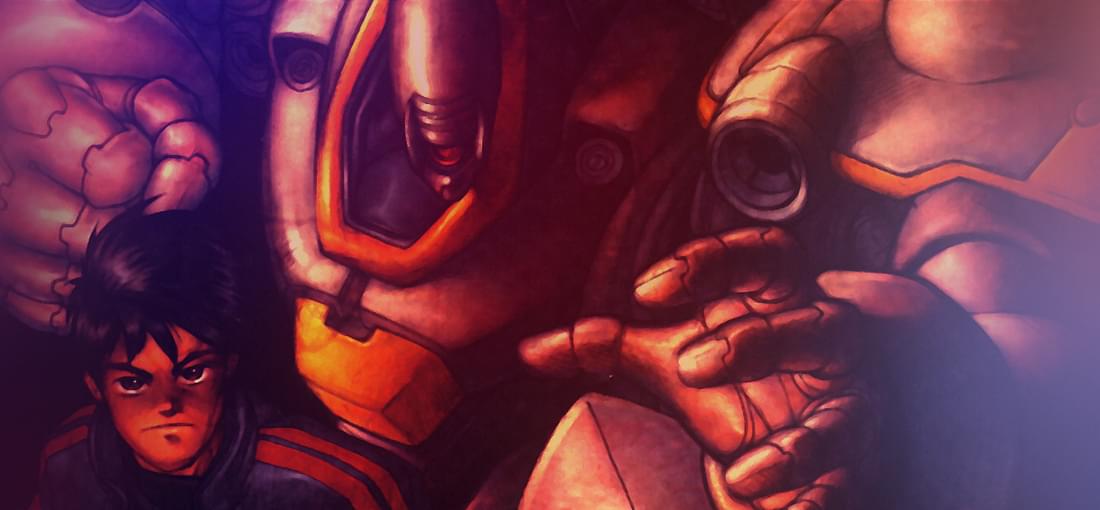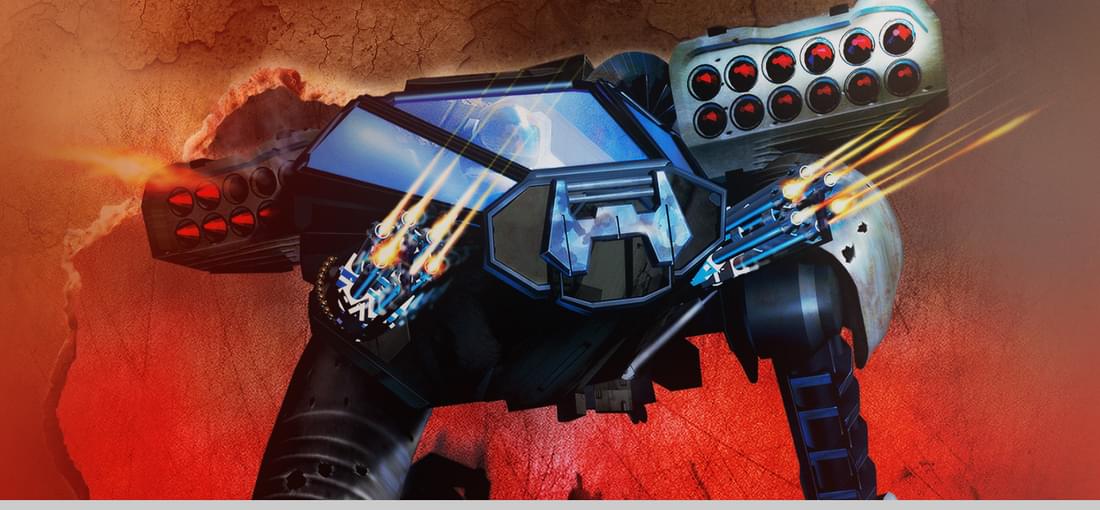


The plot is cool. The puzzles aren't too tough or arbitrary. The mix of stealth, action, and puzzling makes for a pleasant harmony. Really, the only serious problem with this game is the problematic movement controls, as you will discover the first time you try to climb a set of stairs or a ladder.

Rather than give one of my usual long, in-depth reviews, I'm just going to state why I took two stars off this game's score. First, the game loses one star for lack of depth. The missions are all more or less the same: build up your forces, and then blow up everything except whatever buildings your mission brief says you must capture. The story is never given any more explanation than you find in the manual, and overall there just doesn't seem to be much of a motivation to press on from one mission to the next. Second, the game loses another star for pacing issues. Most RTS games include either an active pause feature or some kind of speed-dial to change the rate at which the action happens. Earth 2140 has neither, which means that whenever a fight starts, you're basically at the mercy of the computer's AI because everything moves too quickly for you to really control your soldiers, especially when you're fighting small airborne units. Resemblance to Command and Conquer aside, this is can be a difficult game to play, and the rewards the game gives you for winning do not seem equal to the effort you put into winning.

Given that this game is absolutely free and utterly hilarious at times, I'd recommend it to anyone who doesn't completely despise adventure games. However, you should be warned that it's very short. It took me all of one afternoon to finish it completely.

Tex Murphy 1-2 is a set of adventure games that share characters and a setting, but don't bear much resemblance to eachother otherwise. As such, this review will cover both games individually before declaring their value as a package. STORY 1; (5/5): The story of Mean Streets is pretty simple and straightforward once you know all of it, but it's the process of finding it all out piece by piece that makes the tale interesting. The characters all have unique personalities and are interesting in their own way, and there are many jokes to be had at their expense. The story makes the world worth exploring, which is all an adventure game could ever hope for. VISUALS 1; (4/5): For 1991, this looks pretty good. It's not pretty, but the thematic backgrounds are all nice and the talking heads are a nice touch even when they don't speak aloud. The only complaint I can realistically make is about the weird colors you see when flying about in your air-car. Why are the bridges purple? What are those funky pyramids? What's that big yellow spot on the ground? SOUNDS 1; (3/5) For 1991, this is okay. There's a tiny bit of good voice acting, but other than that the sounds are mostly unimpressive. Come to that, there's not very much sound at all. GAMEPLAY 1; (3/5): The story is good, but the gameplay is not, primarily for three reasons. 1st, there are a number of puzzles in the game that you have to complete within a time limit. It's never fun to be timed in any game, but it's especially bad in adventure games where you reap the most benefit from taking the time to explore everything, not to mention games in which your character's movement speed is comparable to that of a drunken snail. 2nd, the adventure-gaming and interrogation is broken up with side-scrolling shootout minigames. These minigames can be arbitrarily hard even on the lowest difficulty level, and there doesn't seem to be any way to avoid them. 3rd, flying the car is boring. You just float in the air until you reach your destination, and then land. There's nothing to add variety to it except the distance you travel, and the scenery below you isn't pretty enough to be enthralled with. My suggestion is that you just turn on the autopilot and bring a book. That said, the game is fun when you're actually busy talking to people and tampering with your environment. This is one of the few adventure games I've played which I think can really be considered "free-roaming." The objectives you need to complete for the end of the game can be done in any order you like. Think of it like this; you are sitting at the edge of a spiderweb. Every person you talk to is a link in the web's weave. Because of this setup, the relationships between the different characters effectively allow you to get the same information from at least 2 different sources, always, and that gives you a fair amount of freedom in how to conduct your investigation. The only problem is the lack of money, but that can be resolved by hocking the miscellaneous objects that you "find" while adventuring and by being careful who you spend bribe-money on. STORY 2; (4/5): The second game's story is about the same as the first in terms of complexity, but since the gameplay is arranged differently it doesn't have as much force. In the first game you can piece together the clues and figure out the truth on your own readily enough, but in the second game you don't discover the whole story until the last minute. Points off for that. There are also fewer quirky characters; more points off. VISUALS 2; (3/5): Given that this is still an old game, I don't have any real complaints to offer. However, since the gameplay got rearranged, it's not as easy to find hidden objects any more; now you have to play "Hunt the Pixel." This problem is somewhat mitigated by the Help button, but it's still a serious problem that you can't really see your environment all that well. SOUNDS 2; (4/5): Significant improvements over the first game. There's now some decent midi music for every area you enter, with a nice noir sound to it. There's also more voice acting. For the early '90's, this is great. I'm not giving it a 5, though, because sound effects are still generally negligible. GAMEPLAY 2; (3/5): The development team took the time to remove the annoying shootout and flying minigames. That's good. Then they streamlined the game's command system and added mouse functionality to make it easier to use. That's good too. Then they designed the game to be almost completely linear, and included a number of different sections of the game where it's possible to screw up the game completely and make it impossible to progress without reloading an old save, and I'm not discussing situations where your character simply dies. That's very very bad. Quite aside from the fact that the joy of exploring and social networks is now reduced by the smaller number of people and linear gameplay, it's always annoying when you screw up something vital and don't know it. For instance, at the beginning of the game, you run into this secretary character who you MUST take out on a date and who MUST have the time of her life with you, or you can't finish the game. If you fail, the game does not end and you don't recieve any message to the effect that you cannot continue. Plus, the second TM game has added a dialogue-tree system in which you can try to persuade people to talk to you by pursuing different dialogue options. Since there's generally only one "right" path in the dialogue tree (which may or may not include presenting an item at a specific time), you may have to run through the same conversation with someone several times in order to get them to talk to you. That gets old fast. Mitigating some of these problems is the inclusion of a "help" button which tells you about all the different items in the area you can interact with and gives you hints on how to manipulate them. However, due to previously mentioned visual issues, you may find yourself becoming totally dependent on the help button to progress. OVERALL VALUE FOR PRICE; (4/5): This is a novel sort of game package, and if you're into mysteries or adventure games I'd certainly recommend it. That said, you should beware of the risks you run when you play these games. Save early, save often, save in multiple slots.

Septerra Core: Legacy of the creator is a fine game for killing time (there's 40-60 hours of play in this thing, at least), but it's not as fun as it could be. The story is good but not great, the gameplay can be kind of confusing at times, and the combat can be kind of slow. It's a fine game for RPG lovers, but it's not an outstanding example of the genre or an especially good game unto itself. STORY (4/5): The story of this game is a pretty good one, all things considered. The setting is unique and interesting, and the basis of the plot is pretty good; you control Maya, a salvager ("Junker") from the second shell of Septerra, and you along with your friends get pulled into a conflict between the Chosen People of the first shell and the rest of Septerra. If you can resist a knee-jerk reaction to all the religious philosophy that pervades the game, it's quite good. The reason why the story section doesn't get a 5 is because while it is generally good, chapter to chapter, the connections between chapters can be kind of weak. Often, I found myself exploring blindly across Septerra's varied landscapes, looking for a clue about what I needed to do next, but there will be more on that in the Gamplay section. SOUNDS (3/5): The music of this game is very limited. There are seven different overworld map themes, but since you spend most of the game running around in towns or dungeons, you don't get to listen to those tunes much. Instead, you get combat music and the ambient background noise. The combat music gets old after you've heard it for the thousandth time. The music itself is generally pretty good, but the way the game is set up, you probably won't have the luxury of appreciating that detail. The game is fully voice-acted, with a variable degree of quality. I've heard some great voice-acting in my time, and also some absolutely terrible acting; this game falls in the middle. The characters are great when they're making sarcastic remarks or giving descriptions of objects you find on Septerra, but mostly they don't do an especially good job of conveying strong emotions. Plus, in my version of the game, there was a persistant glitch that would cause short sentences spoken by the characters to be cut off; the game's written dialogue always runs at the same pace as the voice-acting, so in some cases there's no time to read what the characters say before the textbox moves to the next character. Other sounds are unremarkable. VISUALS (4/5): This game is pretty, given the time of its making. That said, the quality of the animations seems to vary depending on a variety of factors. When your characters are conversing and it isn't an FMV cutscene, little talking heads pop up to accompany the dialogue. I thought these heads were fairly expressive emotionally and generally well-done. When your characters are just wandering around on the map, their animations are limited and not very fluid. It looks better than a 16-bit game, but not by very much. The few FMV scenes are often kind of ugly and also seem to be unnecessarily dark. I felt, during the game, that the designers much have done better to somehow render the cutscenes into the game itself instead of breaking the flow with FMVs. GAMEPLAY (2/5): The combat is boring. B-O-R-I-N-G. It's very slow, there's no way to speed up the animations, and in battles which feature six enemies or more (which is almost all of them), it can take an arbitrarily long time to kill enemies who aren't seriously dangerous unless you just sit there and let them hit you. Even then, it would generally take them at least ten minutes to kill you. Another reviewer complained that this is a bad game for a mage. This is true for most of the game, but in the endgame, magic becomes the fast solution to every problem. As long as you have enough Core-restoring items, any and all enemies can be destroyed in under 20 seconds using one or two spells. This is also boring, but at least it's faster than being shot at 3-4 times while waitng for your Endurance meter to charge up, unleashing one attack, and then repeating the process until everyone dies. Most of the time, magic is used as a weapon against you that you cannot effectively counter, making battles longer and harder without giving any extra rewards. The dungeons are generally not very interesting. They look great, but they generally only come in the forms of: A) Roughly linear tunnels full of monsters. B) Looping tunnels full of locked doors and levers that open locked doors. C) Looping tunnels full of locked doors, levers that open locked doors, and keys to other locked doors. .... and they get progressively larger as the game progresses, so that by the end of the game you become absolutely dependent on your map in order to avoid getting lost in the enormous dungeon-sprawl. On top of that, there are several sections of the game that seem to mimic an adventure game in a bad way. You get presented with a puzzle, usually in the form of a locked door, that you can only open with a certain combination of items. You need to be exceptionally attentive in order to notice every item you need and know how to use it. Your characters can give you limited hints if you click on the right things, but by and large you're left with no real guidance. Sometimes this can be very frustrating, because if you fail to notice a particular piece of scenery and examine it with the right character, you may never find a solution to your problems. OVERALL (3/5): This isn't going to join the list of my favorite games anytime soon. It's interesting for its setting and plot, but not much else. If you want a game that you can play for weeks, this is an okay one; however, you'll be spending most of that playtime fighting needlessly long battles and marching through oversized dungeon environments. I'm serious about the laggy combat. I got into the habit of bringing a book to read between combat rounds.

Shogo: Mobile Armor division may be a mech simulator, but there really isn't anything to seperate it from traditional shooters besides a change in weapons and camera angles. The plot doesn't have any real depth to it, and while the gameplay is fun, there's nothing that really sets this game apart. VISUALS 3/5: "Tacky" is the first thing that comes into my mind when I look at this game. I supposed I shouldn't complain about the graphics in a game that came out ten years ago, but it can be really jarring to look at all the people who don't look like people except in the most cursory way. My guess is that they spent all of the visual budget on the mechs (which look a lot nicer than than the humans, mostly), on the weapon's special effects (the way that explosions cover an area in smoke is a nice touch), and on the exploding people (apparently your enemies are nothing more than blood-balloons who carry firearms). SOUNDS 3/5: I've heard worse, but I've also heard better. The music, when there's any to hear, is unmemorable, and the sounds your firearms make is fairly standard. I think Shattered Steel did a much better sounds effects job than this game. The character voice-acting for the main character always sounds far too flippant for the situation. STORY 2/5: It's an anime-style plot, and completely predictable. The characters are all outrageous stereotypes of one kind or another (cocksure hero, nice girl, naughty girl, mechanic, suspicious dude, over-serious authority figure...), and there's only one point at which you can make any difference in how the game's story progresses. At least it makes sense... mostly... GAMEPLAY 4/5: The gameplay is the only area in which this game shines, or at least glimmers a bit. The game is split up into "vehicle" sections where you pilot your mech and normal sections where you run around on the ground shooting people. When you're in your mech, you really do get to act like a massive walking tank and lay waste to everything in your path. Ammo is generally plentiful, so you need never fear the consequences of taking the time to blow up each and every single car on each and every single street in each and every single level. Each weapon has its own distinct use in this mode.There are different types of mechs, too, but the difference between them aren't big enough to actually change the gameplay. When you're on foot, you need to be a lot more careful. The old combat adage "Kill them before they kill you" is very literally true when you fight on foot; a careless move could easily result in your painful demise, and you may find yourself reloading the game a lot to make sure that YOU make that first fatal shot. Generally, this is easy enough to do as long as you have an automatic weapon and decent reflexes. The distinction between weapons is a bit weaker in this mode; generally, the time difference you have between killing someone with your pistols and killing someone with your SMG is one of microseconds, and with the exception of the shotgun and the assorted explosive launchers, there isn't much of a difference between one gun and another. It's all good fun, but there are a number of things that grate on me. Firstly, you can only open doors and push buttons by slamming your face into them with the movement keys. Secondly, your mech will carry over health and armor from mission to mission, but your actual character generally will not. Thirdly, pretty much every game level is completely linear, and whenever it ISN'T linear you're not given clear directions on where to go or what to do. Fourthly, there are a few glitches and problems in the game that evidently weren't picked up in beta testing; one example of these is a particular suction tube which will supposedly draw you up when you're underneath it. Unfortunately, this tube is suspended over a bottomless pit, and it is VERY finicky about the precise position you have to be in in order to get sucked up. I died many times trying to get that thing to work.... PRICE FOR VALUE/OVERALL 3/5: If what you want is a mindless shooter game, Shogo: Mobile Armor Division will certainly fill that role. If you're looking for anything deeper, look elsewhere.

This game was my first foray into the world of Mech simulators, and while I did enjoy it, I was not sufficiently impressed by this example of the genre. It's a good game, but there are some rather large and irriating problems with it that irritate me too much to give it more than a 3. STORY (3/5): The story was not very deep. For the most part, it seemed more like there was just a sort of shallow plot to move you from mission A to mission B, and while the voice acting introducing each mission was nice, the disconnect between the mission briefings and the mission action was rather wide. The story wasn't BAD, it just didn't leave much of an impression on me. It also holds a few inconsistencies regarding how your AI commander behaves; if these AINIC models keep trying to kill their pilots or develop other mental instabilities, why do I even have one giving me commands? Is the Corporation's budget so small that I can't just get a live, sane person to tell me what to do? Also, why am I ALWAYS fighting alone against massive armies if I'm supposed to be part of a larger war effort? SOUNDS (4/5): The music was good, when I had the time to listen to it. The sound effects were nice too. It wasn't anything spectacular, but I did like the sound of missiles launching... VISUALS (3/5): Given that this was made in 1996, I probably shouldn't complain too much about this, but the visuals were not great. With the gamma on default settings, some levels were almost too dark to see in; turn the gamma up, and suddenly it's always noon in the Sahara. The draw distances were bad, too, as indicated by all the times that I got shot at by enemies who were too far away for me to see. Then there's the fact that there's only two kinds of explosion... but at least all the movements of 3D models looked okay. I'll give this category a passing grade on account of the time it was made, but a game with this many visual problems would never make it in today's market. GAMEPLAY (3/5): Shooting stuff is always fun, but there were several things that marred the experience for me in this game, the most prominent of which is hit detection. Unless yo're using seeker missiles, it is ridiculously hard to hit a long-distance target with a flying explosive. Why? Because at least half your shots will somehow go right through it, that's why. Even if the target is immobile (this includes buildings!), and your targeting reticule is squarely on the target, the missile will often pass through the target and explode harmlessly somewhere on its far side. This can happen with lasers too. And let's not forget the fact that mortar rounds almost never land where you aimed them, usually flying about a kilometer ahead of where your targeting reticule is. As such, winning this game requires a heavy dependence on machines guns, which brings me to my next beef: ammo. Most levels do not give you any way to restore lost ammunition, and since your Pilot Runner is very often given the responsibilty to being a one-man army, you can run out of ammunition suprisingly fast. Laser weapons regenerate over time, but they don't regenerate nearly fast enough to save you if you're in a firefight and run out. Missiles and other weapons do not regenerate, leaving you with some hard choices to make about what weapons to use and where to use them. If you could salvage anything from all the mechs you blow up, this wouldn't be a problem, but you cannot do any such thing. Then there are some weapons which are useless or as dangerous to you as they are to the enemy (mines are nearly useless, rolling mines never roll in a predictable direction, and nukes will blow you up as often as they will the enemy, unless you shoot blindly ahead in the direction of a target you can't see). Compounding all these other difficulties is an end boss who is nearly impossible to kill. I couldn't manage it myself without cheat codes, and did I mention that I hit it once directly with a nuclear missile and failed to destroy it? There is good news, though. The missions are nicely varied, and always intense enough that you never get bored. Panicked, maybe, but never bored. Also, the deformable terrain is a joy to play with; the depth of a crater you can make with a nuke is impressive, and the fact that you can churn up earth with your machine gun is even better: try digging a hole with it, or shoot at a hill until you've leveled it. It's fun! OVERALL: (3/5); Shattered Steel is fun, but I wouldn't recommend it to anyone if it wasn't so cheap. If you're keen on buying a shooter/mech sim, you could do worse than this. Than again, you could also probably do better.